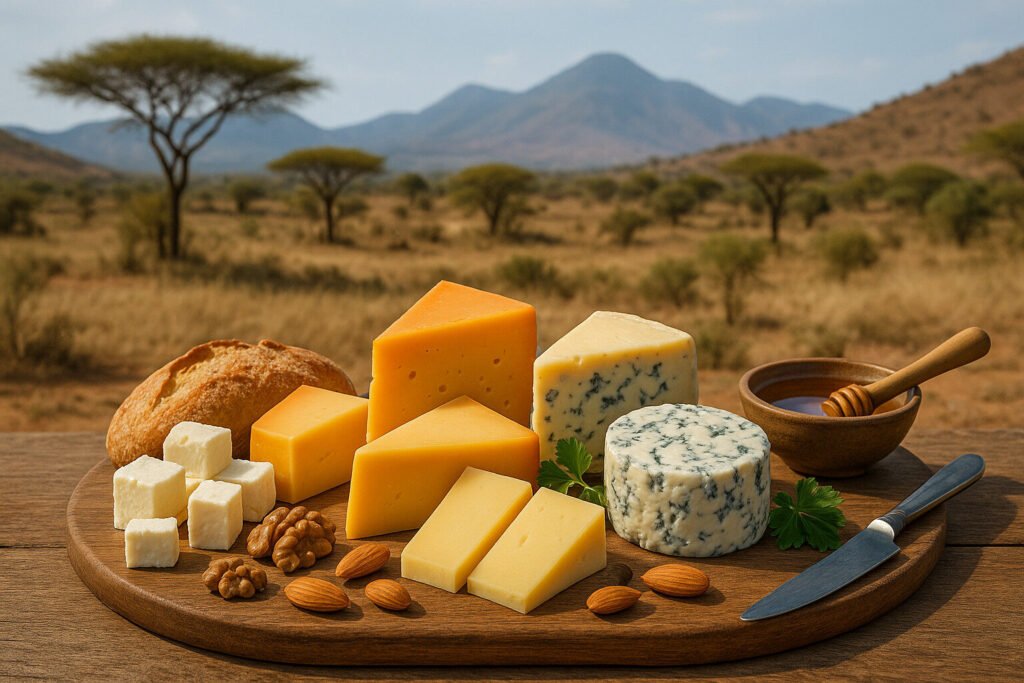Cheese Of Somalia
Cheese in Somalia
Somalia’s cheese production is primarily artisanal and tied to pastoral traditions. The most common varieties are fresh, soft cheeses made from goat or camel milk. These cheeses are unsalted or lightly salted and have a short shelf life due to the climate and lack of industrial preservation.
Cheese is not a major commercial commodity in the Somali diet but holds cultural significance in rural communities. Production is often small-scale, intended for immediate family consumption or local trade. The scope is limited to a few traditional styles adapted to the available livestock and arid environment.
Production Techniques
Traditional Somali cheese is made by curdling fresh milk, typically from camels or goats, using natural lactic acid fermentation or wild cultures. The curds are lightly drained in woven baskets or cloth bags. No complex aging or pressing is applied, resulting in a moist, spreadable texture.
Due to high temperatures, the process is quick, often completed within a day. Salt may be rubbed on the surface or omitted entirely. These methods reflect a nomadic heritage where refrigeration is scarce and dairy must be consumed rapidly or converted into longer-lasting products like suusa or subag.
Sensory Profile
Somali fresh cheese is characterized by a mild, tangy, and slightly sour flavor from spontaneous fermentation. The aroma is milky and clean, with subtle grassy notes reflecting the animals’ diet of acacia and other hardy shrubs. Its texture is soft, crumbly, and moist, similar to fresh farmer’s cheese.
There is little to no rind development, and the color is bright white. The flavor profile remains simple due to the absence of aging, added molds, or complex brining. High moisture content gives it a perishable, delicate quality distinct from aged or hard cheeses.
Uses and Consumption
Fresh Somali cheese is commonly eaten alone as a snack or paired with flatbread like canjeero or rooti. It may be crumbled over stews or mixed into rice dishes for added protein and tang. Its mildness makes it a versatile component in both savory and occasional sweet preparations.
In pastoral settings, it serves as a valuable source of nutrition when other foods are scarce. It is rarely exported and remains a localized food item. Some modern adaptations include mixing it with herbs or chili for breakfast meals.
Regional Examples
One known example is “Mishaar” or “Jibneh,” a simple fresh cheese found in Somali households. It is particularly common in northern regions such as Somaliland, where camel husbandry is widespread. Each family or community may have slight variations in texture or taste.
Another example includes cheeses made by the Reer Baadiye pastoralists, who produce it during the rainy season when milk is abundant. These cheeses are almost always consumed fresh and do not carry specific protected names, reflecting their informal, subsistence-oriented production.


